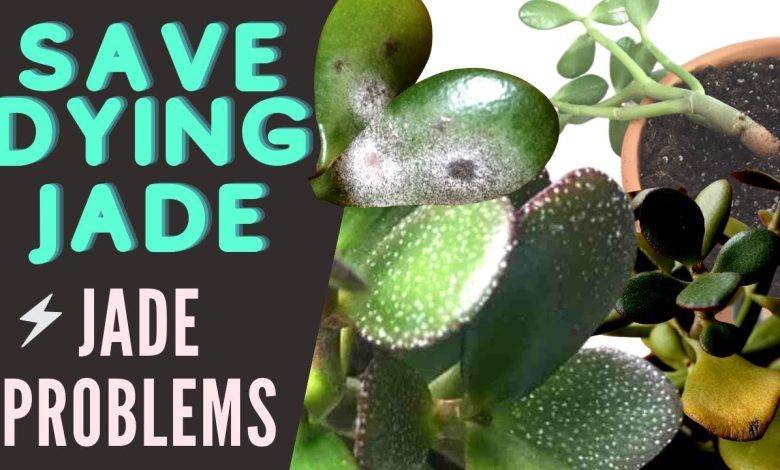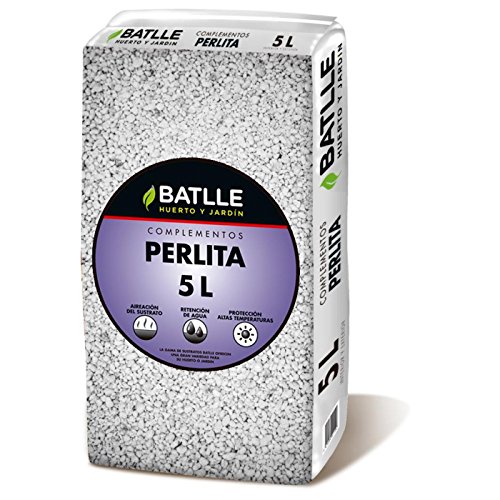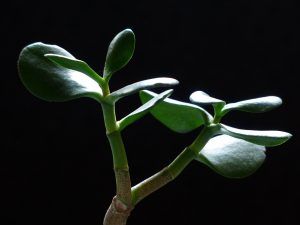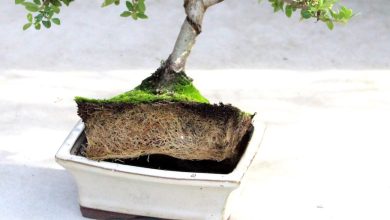Jade Care: [Earth, Humidity, Pruning and Problems]

What characteristics does jade have?

Jade, popularly known as the money plant, is a succulent native to Mozambique that has more than 1,400 varieties.
But it was the Chinese culture that was responsible for selling it throughout the world as a lavish amulet of abundance that can reach up to a meter in height.
And it is a precious gift of friendship, of great beauty when cultivated under the magic of Bonsai.
In the ancient art of Feng Shui it is one of the favorite species.
Its placement to the east of the house is recommended to guarantee family harmony, successful studies and good health. And when it is necessary to get fortune, close good deals, then the plant should be placed in the southeast region of the house.
It therefore has a place of honor in homes, because its fame is associated with fortune and abundance, but it is also recognized as a source of longevity, since it lives for many years if it is properly cared for.
Originally it was known as Crassula Ovata. Its name alludes to properties such as thick or thick, in association with the main characteristic of its fleshy leaves of a sensational mottled green.
And the flowering is very delicate indeed, because small star-shaped flowers in colors such as white and pink usually appear in late winter and early spring.
Among the most famous varieties we have the Hummel’s Sunset, carrier of leaves with yellow and red tips. Or the Jade Tricolor, with shades of cream and white, and the Et’s Fingers, with red-tipped leaves and a tubular shape.
Like all kinds of the family of succulent plants, any of its varieties is very self-sufficient, because it really requires little care, but it must also be said that it is necessary to pay attention to some points of interest that will bring benefits.
What soil needs does jade have?
It prefers porous substrates with high filtering power. It really likes to take root in light, sandy soils. A substrate for cacti and succulents is very convenient.

The ideal is to prepare a mixture of land varieties. For example, it is convenient for any version of Jade, whether in a pot, garden or Bonsai-type specimen, to mix equal parts of garden soil, perlite and coarse sand, with a strategic touch of gravel.

When you have it in a pot, it is best to look for one made from clay or mud, because they help to drain the water more quickly after each day of irrigation.

How to make jade grow strong and vigorous?

A fundamental element that lavishes well-being on any succulent plant such as jade, is adequate watering.
Pouring water in an exaggerated way will lead to certain death. You must always keep in mind its great capacity to store water in its leaves.
The key to watering is to do it only when the substrate is completely dry.
Therefore, it is necessary to check the level of humidity before applying irrigation, verifying with an act as simple as sinking your finger into the ground to feel if there is water.
Irrigation must be graduated, an excessive or large dose cannot be applied, but quite the opposite, little and spaced.
It should hardly be watered two or three times in summer and one or two times in winter at most. Also, when you have it in the pot, you have to let the water filter and drain into the plate completely and then remove it to prevent insects and fungi from nesting.
Light is also key in the life of jades. In order for them to grow healthy and strong, with splendid, very green and fleshy leaves, they need to receive a good amount of daily sunlight. That is why it is preferable to have it outdoors or in a well-lit part of the house, either near a window, on a patio or terrace.
4 hours of direct sunlight a day will suffice. The ideal is also to let them rest. So it doesn’t hurt to put them in semi-shade, because excessive sunlight dries them out.
Another key factor is to fertilize the plant, always after it receives adequate watering, since if you do it the other way around, the water will run off the fertilizer and that is not the idea. A fabulous fertilizer for this succulent is earthworm humus, worm castings or any other organic fertilizer.
There are experts who recommend the use of fertilizer for African violets. The right date to provide a good compost or the best fertilizer is spring and summer. Of the rest no, because in a latency state it is not worth it, you have to do it when they are active, not in cold periods.
What moisture does jade need?
 High humidity affects any variety of succulent plants, precisely because they are capable of retaining water in their stems and leaves.
High humidity affects any variety of succulent plants, precisely because they are capable of retaining water in their stems and leaves.
So the excess will affect them tremendously with disastrous effects such as rot derived from the appearance of fungi and fungal diseases.
A dry environment, or a heating system at home, are equally great enemies of the health of jades. As for the temperature, the ideal range cannot exceed 27ºC and the minimum reaches 5ºC.
Winter cold, snowfall or frost do not suit you either. It is best to always have it at temperatures between 10ºC to 15ºC. Although it should be noted that when temperatures drop at night, the blooms of this ancient plant appear.
But yes, it can withstand the cold of late autumn or early winter, as long as the temperature is not below 5ºC.
Is it necessary to prune jade?
Jade is a small tree that requires regular pruning so that it can grow harmoniously and compactly. But if it is not done since it is small, it is not necessary to prune it on a recurring basis.
What is extremely important is to remove the leaves or diseased and dry parts, especially after flowering. This must be done with previously disinfected pruning shears. It is necessary to cut at a certain distance from the main trunk, because it must not be impacted.

Likewise, you can take some healthy parts to multiply the plant with the help of the propagation technique by cuttings, since it «takes» quickly, either from a leaf or a twig that you place in the ground or in a pot.
How often should we prune jade?
As already explained, jade must be pruned for decorative purposes and to remove, from time to time, dry, withered or diseased parts. Nothing more.
How to avoid jade pests and diseases?
Although the jade tree is actually in very good health due to its high resistance, it can be affected by the attack of mites, mealybugs and fungi. They are indeed susceptible to diseases of fungal origin.
mealybugs
They are great tenants of disaster, because they hide under the stems and leaves. You have to check the entire plant and if you see these bugs, then you have to apply water with a sprayer or remove the insects using a cotton swab soaked in alcohol, or with the help of cotton swabs also works.

The cleaning days must be repeated to eliminate any scaly pest, but if the plant has become too infested then it is appropriate to make a clean cut of it to exterminate the pest. There are also very affective ecological formulas such as the use of Neem oil and the application of potassium soap.

root rot
It is very common for root and stem rot to occur when soil moisture is excessive. That is why it is of the utmost importance to let the soil dry between each watering. Or the consequences will be uncontrollable.
One way to save the plant from rot is to remove it from the pot or garden area where it has grown, remove all damaged parts and reserve the less damaged cuttings.
If they have wounds, they must be left to dry outdoors and after they have healed then they must be placed in a new pot in substrates for cacti or succulents, take it to a place with good lighting and when new roots come out then proceed to water them very moderately..
Mushrooms
The most common is the powdery mildew fungus, a powerful enemy that hardly attacks indoors, but is very careful in open places where this succulent is kept. Applying a fungicide promptly is most appropriate.
rough leaves
When the leaves become wrinkled, dull and ugly it is due to lack of water, they have dehydrated and urgently need water moderately but with certain constancy.
soft leaves
And if the leaves become soft, gelatinous, then it indicates that they have been affected by excess water.
falling leaves
Likewise, if the leaves of a jade begin to fall, this indicates that the irrigation is not being applied correctly. The leaves also fall because the roots get sick and are unable to absorb water from the soil, so they turn yellow and fall.
Maybe you are also interested in:

![Photo of Ergot of Rye: [Characteristics, Cultivation, Diseases and Meaning]](https://www.complete-gardening.com/wp-content/uploads/2022/08/ergot-of-rye-characteristics-cultivation-diseases-and-meaning-390x220.jpg)

